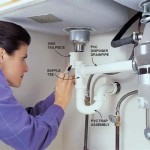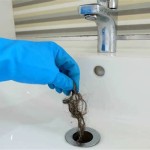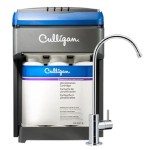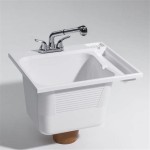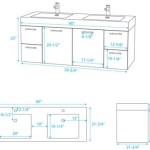Bathroom Sink Clogged Behind Wall: Causes, Diagnosis, and Solutions
A clogged bathroom sink is a common household plumbing issue, but when the blockage occurs behind the wall, the situation becomes more complex. Identifying and resolving a clog in this location requires a systematic approach, combining diagnostic techniques with appropriate solutions. Understanding the causes, symptoms, and methods for accessing and clearing the obstruction is crucial for effective remediation.
The plumbing system connecting a bathroom sink to the main drainage line involves pipes concealed within the walls. These pipes are vulnerable to the same clogging materials as the sink drain itself, including hair, soap scum, toothpaste, and small objects. However, the inaccessibility of the pipes behind the wall necessitates a different strategy for diagnosis and repair compared to a clog directly in the sink drain.
The consequences of ignoring a clog behind the wall can extend beyond a simple inconvenience. Untreated blockages can lead to increased water pressure within the pipes, potentially causing leaks or even pipe bursts. Furthermore, standing water trapped within the wall cavity can contribute to mold growth, compromising indoor air quality and potentially causing structural damage.
Common Causes of Clogs Behind the Wall
Several factors can contribute to the formation of clogs in the pipes behind a bathroom sink wall. The most prevalent causes involve the accumulation of common household waste products:
*Hair:
Hair is a primary contributor to drain blockages. Individual strands of hair bind together, forming dense clumps that easily trap other debris. The rough texture of hair facilitates the adhesion of soap scum and grease, further solidifying the blockage. The presence of hair in the drain line is almost unavoidable, particularly in households with multiple occupants. *Soap Scum:
Traditional bar soaps contain fats and oils that react with minerals in hard water to form soap scum. This sticky residue adheres to the inner walls of pipes, gradually reducing the diameter of the drain line. Over time, the accumulation of soap scum restricts water flow and creates a surface for other debris to cling to, accelerating the clogging process. Liquid soaps, while generally less prone to scum formation, can still contribute to blockages if used excessively. *Toothpaste:
While toothpaste seems innocuous, its consistency and composition can contribute to drain clogs. Certain toothpaste formulations contain ingredients that solidify when exposed to water, particularly in colder environments. The frequent rinsing of toothpaste down the drain, especially in conjunction with other debris, can lead to a gradual buildup of residue that eventually restricts water flow. *Small Objects:
Accidental dropping of small objects, such as jewelry, bottle caps, or pieces of plastic, into the sink drain can result in significant blockages. These objects can become lodged in the drainpipe, obstructing water flow and creating a focal point for the accumulation of other debris. The likelihood of such incidents underscores the importance of exercising caution when using the bathroom sink. *Pipe Scale and Mineral Buildup:
In areas with hard water, mineral deposits can accumulate on the inside of the drainpipes over time. This buildup, known as pipe scale, reduces the internal diameter of the pipes, restricting water flow and creating a rough surface that encourages the accumulation of other debris. This is a slow process, but over many years mineral buildup can significantly decrease the drain's efficiency.In addition to these common causes, improper plumbing practices can also contribute to clogs behind the wall. For example, using undersized drainpipes or failing to properly slope the pipes can increase the risk of blockages. Tree root intrusion, while less common in bathroom sink drain lines, can also occur if the pipes are cracked or damaged, allowing roots to penetrate and obstruct the drain.
Diagnosing a Clog Behind the Wall
Identifying a clog behind the wall requires careful observation and a systematic approach. Several clues indicate the presence of a blockage in this location. Understanding these symptoms is the first step in accurately diagnosing the problem:
*Slow Drainage:
The most obvious sign of a clog is a slow-draining sink. If water takes longer than usual to drain, or if it pools in the sink for an extended period, it suggests a restriction in the drain line. This slow drainage may be intermittent at first, gradually worsening as the blockage accumulates. *Gurgling Sounds:
Gurgling sounds emanating from the drainpipe indicate trapped air within the plumbing system. This air is displaced as water attempts to flow past the blockage, creating the characteristic gurgling noise. The presence of gurgling sounds is a strong indicator of a partial or complete obstruction in the drain line. This is usually an indication the drain line is trying to pull air somewhere. *Unpleasant Odors:
Foul odors rising from the drain indicate the decomposition of organic matter trapped within the blockage. This decaying material releases gases that permeate the bathroom, creating an unpleasant and potentially unhealthy environment. The presence of foul odors is a clear signal that the clog needs to be addressed promptly. *Water Backups:
In severe cases, a complete blockage can lead to water backups in the sink. This occurs when water cannot flow past the obstruction and instead rises back up through the drain. Water backups can cause significant damage to the surrounding area and should be addressed immediately. *Water Stains on the Wall or Ceiling:
Water stains on the wall or ceiling near the sink may indicate a leak caused by increased pressure from the clog. These stains are a sign that water is escaping the drain line, potentially damaging the structure of the building. This would require opening up the section and repairing any leaks.Once these initial symptoms are observed, further investigation is often necessary to pinpoint the exact location of the clog. Examining the pipes under the sink, using a plumbing snake, and, in some cases, employing a camera inspection system can assist in identifying the cause and location of the blockage.
Solutions for Clearing Clogs Behind the Wall
Addressing a clog behind the wall requires a strategic approach, considering the severity of the blockage and the accessibility of the pipes. Several methods can be employed, ranging from simple DIY techniques to professional plumbing services:
*Plunging:
Using a plunger is often the first line of defense against minor clogs. The plunging action creates pressure that can dislodge the blockage and restore proper drainage. Ensure there is enough water in the sink to cover the cup of the plunger and apply firm, consistent pressure while plunging. Holding a wet towel over the overflow drain will help increase the vacuum effect. *Chemical Drain Cleaners:
Chemical drain cleaners contain harsh chemicals that dissolve organic matter and break down clogs. While these products can be effective in some cases, they should be used with caution. Chemical drain cleaners can damage pipes, particularly older pipes made of PVC or metal. Additionally, they pose a health hazard if improperly handled. Always follow the manufacturer's instructions carefully and wear appropriate protective gear, such as gloves and eye protection. Additionally, avoid using chemical drain cleaners if you've previously used other chemicals attempts, as dangerous chemical reactions can occur. *Plumbing Snake (Auger):
A plumbing snake, also known as an auger, is a flexible tool that can be inserted into the drainpipe to break apart or retrieve the clog. Plumbing snakes come in various lengths and thicknesses, allowing them to reach different depths within the drain line. To use a plumbing snake, carefully insert the tip into the drain opening and feed it through the pipe until it encounters resistance. Rotate the handle to break up the clog or hook onto it, then carefully retract the snake to remove the debris. *Enzyme Drain Cleaners:
Enzyme-based drain cleaners offer a more environmentally friendly alternative to chemical cleaners. These cleaners contain enzymes that break down organic matter without harming pipes or posing a significant health risk. However, enzyme cleaners are typically less effective on severe clogs and may require multiple applications. Usually, these type of enzyme drain cleaners are for preventative maintenance. *Hydro Jetting:
Hydro jetting involves using high-pressure water to blast away clogs and clear the drain line. This method is highly effective for removing stubborn blockages, including grease, soap scum, and mineral buildup. However, hydro jetting requires specialized equipment and is typically performed by professional plumbers. *Accessing the Pipes Directly:
In some cases, it may be necessary to access the pipes behind the wall to manually remove the clog. This involves cutting an access panel in the wall and disconnecting the drainpipe. This is usually required if a larger object is lodged in the pipe. This approach requires a certain level of plumbing knowledge and skill and is best left to a qualified plumber.The selection of an appropriate solution depends on the severity of the clog, the type of pipes, and the experience level of the individual attempting the repair. For minor clogs, plunging or using a plumbing snake may suffice. However, for more severe blockages or when dealing with delicate or corroded pipes, it is advisable to seek professional assistance.

Clear A Sink Clogged Past The Trap In Minutes Our Recipes For Success

How To Unclog A Bathroom Sink Drain In The Wall

Clear A Sink Clogged Past The Trap In Minutes Our Recipes For Success

How To Unclog A Bathroom Sink Hana S Happy Home

Clogged Sink Drain In Cold Weather Anchor Sewer And Cleaning

How To Clear A Clogged Drain Forbes Home

How To Unclog A Sink The Right Way Youtube

How To Unclog A Bathroom Sink Drain In The Wall

Why Is My Sink Clogged Mike Diamond

Clear A Sink Clogged Past The Trap In Minutes Our Recipes For Success
